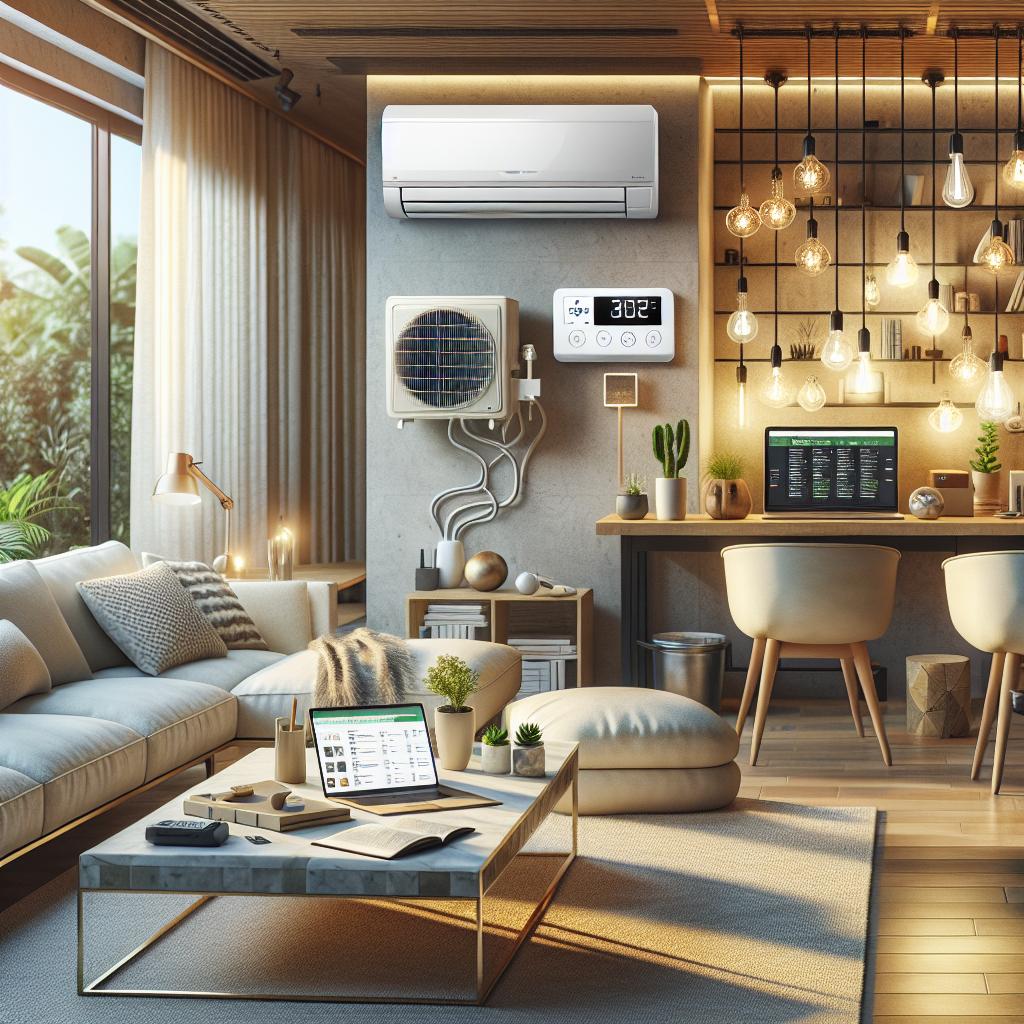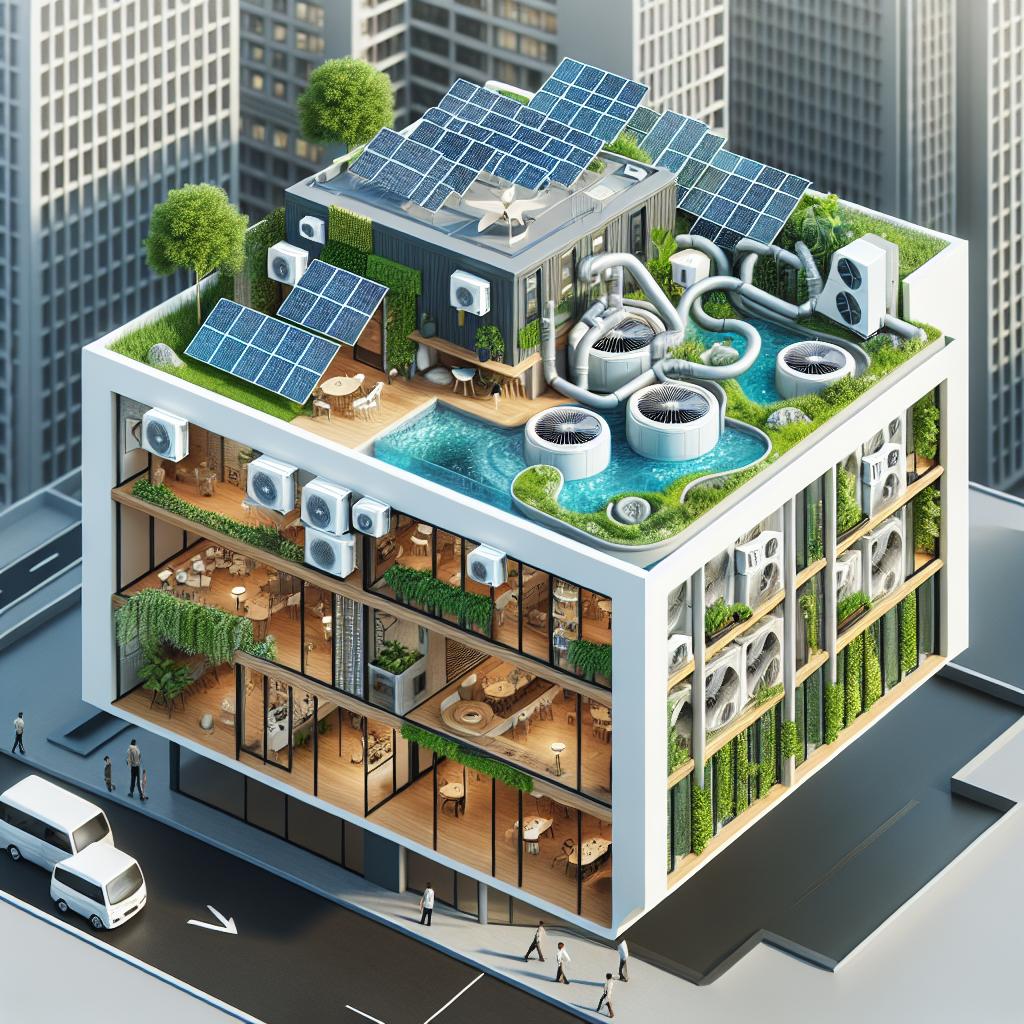In an era where sustainability has emerged as a cornerstone of modern architecture, the quest for eco-friendly solutions is more pressing than ever. Green building initiatives are striving to minimize environmental impact while enhancing the quality of indoor environments, essential for both occupants and the planet. Among the many innovative technologies contributing to this movement, mini split air conditioning systems stand out as a compelling choice for commercial projects. Unlike traditional HVAC systems, mini splits offer efficiency, versatility, and a reduced carbon footprint, aligning seamlessly with green building principles. In this article, we will explore how mini split AC systems not only meet the cooling needs of commercial spaces but also serve as vital players in the larger narrative of sustainable development, paving the way for a greener future in the built environment.
Transforming Indoor Climate Efficiency with Mini Split AC Systems
In the quest for sustainable building solutions, mini split AC systems emerge as an innovative answer to enhancing energy efficiency. These systems operate on the principle of zoning, allowing different areas of a building to cool or heat independently. This targeted approach not only reduces energy consumption but also contributes to a significant decrease in greenhouse gas emissions. By using inverter technology, mini splits can adjust to the cooling demands of the space, ensuring that energy is used more effectively without compromising on comfort. This flexibility makes them ideal for both existing renovation projects and new builds aiming for green certifications.
Moreover, mini split systems are often recognized for their space-saving design and reduced noise levels, which further integrate them into the architecture of eco-friendly commercial spaces. Their installation is less invasive compared to traditional ductwork, maintaining the integrity of the building’s design and minimizing construction waste. The following benefits underscore their role in green building initiatives:
- Enhanced Energy Efficiency: SEER ratings often exceed 20.
- Improved Air Quality: Built-in filtering systems capture pollutants.
- Reduced Carbon Footprint: Lower energy usage translates to minimal emissions.
Harnessing Energy Savings through Advanced Technology
Advanced technology plays a pivotal role in enhancing energy efficiency within commercial spaces, particularly through the implementation of mini split AC systems. Unlike traditional HVAC units, mini splits provide individualized climate control, enabling organizations to maintain optimal temperatures without unnecessary energy expenditure. This technology is designed with inverter-driven compressors, which adjust the cooling or heating output according to the space’s requirements, thereby minimizing energy waste and lowering operational costs over time. Additional features such as programmable thermostats and smart controls further empower building managers to optimize energy usage, aligning with sustainable practices and reducing the carbon footprint.
When visualizing the impact of mini split systems on commercial buildings, it’s beneficial to analyze specific energy savings. A comparative assessment can illustrate the advantages of integrating mini splits versus conventional systems. The following table encapsulates energy performance metrics that showcase the potential benefits of adopting these advanced solutions:
| System Type | Typical Energy Savings (%) | Carbon Footprint Reduction (%) |
|---|---|---|
| Traditional HVAC | 20-30% | 15-20% |
| Mini Split AC | 30-50% | 25-40% |
The evidence illustrates that adopting mini split air conditioning can significantly contribute not only to energy efficiency but also to broader green building initiatives. By reducing energy consumption and lowering greenhouse gas emissions, businesses can meet or even exceed sustainability goals, thus reinforcing their commitment to environmental responsibility and energy conservation.

Enhancing Air Quality and Comfort in Sustainable Designs
In the quest for sustainable design, air quality and comfort are paramount considerations. Mini split AC systems excel in enhancing both aspects by providing targeted cooling and heating that can significantly reduce energy consumption. These systems operate independently in each zone, allowing for customized climate control that maintains optimal comfort without the needless expenditure of energy. This adaptability not only leads to lower utility bills but also minimizes the building’s overall carbon footprint, fostering a healthier indoor environment for occupants and significantly contributing to the principles of green building initiatives.
Additionally, mini split systems are designed with a strong emphasis on energy efficiency, often incorporating inverter technology that adjusts the compressor speed in real-time to meet varying load demands. This results in remarkable energy savings and improved air quality as these systems can more effectively filter pollutants and allergens. The compact, versatile design of mini splits also allows for greater flexibility in building layouts while improving aesthetic appeal, thus supporting a holistic approach to sustainable architecture. As part of a comprehensive strategy to enhance building performance, mini splits are indeed a game changer in creating spaces that are both environmentally friendly and comfortable.

Integrating Mini Split AC into Eco-Friendly Building Standards
Incorporating mini-split air conditioning systems into green building practices offers several sustainable advantages that align with eco-friendly initiatives. These systems utilize ductless technology, minimizing the energy losses typically associated with traditional ductwork. As a result, buildings can achieve greater energy efficiency, which is a critical parameter for green certifications such as LEED or BREEAM. Additionally, mini splits allow for zoned temperature control, ensuring that energy is used only where and when needed, further enhancing overall efficiency and comfort.
Moreover, many modern mini-split units are designed with environmental considerations in mind, featuring refrigerants with low global warming potential (GWP) and advanced energy-saving technologies. Their installation is less invasive than conventional systems, reducing the impact on the building’s structural integrity and conserving materials. By choosing mini-splits, developers and project managers can contribute to a more sustainable future through:
- Reduced Carbon Footprint: Lower energy consumption translates to fewer greenhouse gas emissions.
- Longer Lifespan: Many units boast enhanced durability, reducing the need for replacements.
- Increased Indoor Air Quality: Their filtration systems help improve air circulation and quality.
Q&A
Q&A: How Mini Split AC Can Contribute to Green Building Initiatives in Commercial Projects
Q1: What is a mini split AC system, and how does it work?
A1: A mini split AC system is a versatile air conditioning solution that consists of an outdoor compressor unit and one or more indoor air-handling units. Unlike traditional HVAC systems, mini splits do not require ductwork, which can lead to energy loss. The system operates by using refrigerant to absorb heat from indoors and expel it outside, while integrating advanced features like inverter technology for efficient temperature regulation.
Q2: Why are mini split AC systems considered environmentally friendly?
A2: Mini split systems are deemed “green” primarily due to their energy efficiency. They often have higher Seasonal Energy Efficiency Ratios (SEER) compared to traditional units, meaning they use less electricity to cool a space. Additionally, the absence of ductwork minimizes air leaks and associated energy waste. Many models are also designed to utilize eco-friendly refrigerants, further reducing their carbon footprint.
Q3: How can mini split AC systems help commercial projects achieve green building certifications?
A3: Mini split AC systems can contribute significantly to green building certifications such as LEED (Leadership in Energy and Environmental Design). Their energy-efficient performance can boost a project’s LEED score in areas related to energy optimization. Their design flexibility allows adaptation in various layouts, ensuring effective climate control for diverse spaces while minimizing overall energy consumption.
Q4: What are the additional benefits of using mini split AC systems in commercial settings?
A4: Beyond their green energy credentials, mini split AC systems offer a range of benefits including:
- Zoning Capabilities: Different rooms can be cooled to specific temperatures, enhancing occupant comfort while optimizing energy use.
- Quiet Operation: Mini splits operate quietly, which is ideal for work environments where concentration is key.
- Easy Installation: Without the need for extensive ductwork, installation can be quicker and less disruptive.
- Low Maintenance: Compared to traditional systems, mini splits generally require less maintenance, which can lower operational costs over time.
Q5: Are there any considerations to keep in mind when implementing mini split AC systems in commercial projects?
A5: Yes, while mini splits are advantageous, it’s essential to consider the system’s placement and the size of the indoor units to ensure optimal airflow and cooling efficiency. Additionally, the initial upfront cost can be higher, although the long-term energy savings often offset this. Proper design and professional installation are crucial for maximizing their benefits and alignment with green building goals.
Q6: How do mini split systems compare with other HVAC choices in terms of sustainability?
A6: When compared to traditional centralized HVAC systems, mini splits stand out for their higher energy efficiency and reduced environmental impact. While other systems may offer benefits like centralized control, they can also lead to greater energy loss through ducts. In contrast, mini split systems deliver targeted cooling, resulting in lower overall energy usage and enhanced sustainability within green building initiatives.
Q7: What final thoughts do you have on mini split AC systems and their role in promoting greener commercial practices?
A7: Mini split AC systems symbolize a step toward integrating sustainability into the commercial environment. As buildings aim for higher efficiency standards and reduced environmental impact, leveraging technologies like mini splits is essential. By using these systems, not only can commercial projects support green building initiatives, but they can also create healthier indoor spaces for occupants—a win-win for both the planet and its people.
In Summary
In the ever-evolving landscape of sustainable architecture and design, mini split air conditioning systems emerge as a pivotal player in the quest for eco-friendly commercial spaces. By harmonizing efficiency with comfort, these systems not only reduce energy consumption but also support the broader vision of green building initiatives. As we strive towards minimizing our carbon footprint and fostering energy independence, the integration of mini splits offers a practical solution that aligns with both environmental stewardship and modern architectural aesthetics.
Reimagining how we cool our buildings is not just a matter of comfort—it’s an essential step in shaping a sustainable future. In embracing these cutting-edge systems, architects, builders, and business owners alike can contribute to a greener planet while enhancing the livability and workability of their spaces. As we look ahead, let us remember that every small decision counts towards a larger impact. Investing in mini split AC technology today can pave the way for a more sustainable tomorrow, where innovation meets responsibility in the heart of our urban landscapes.

